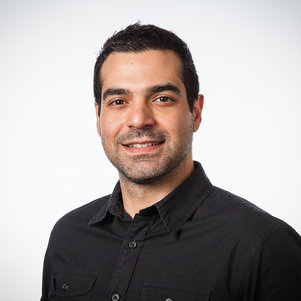3mE wins both second and fourth place in Best Tech-idea 2022
3mE researchers won second and fourth place in the Best Tech-idea 2022 competition run by Dutch science magazine, ‘KIJK’. Second place was awarded to Willem Haverkort for his work on hydrogen-production using membraneless electrolysis and fourth place goes to Farbod Alijani for his research on the use of graphene in detecting antibiotic resistant bacteria.
More efficient hydrogen production
Hydrogen-production by Electrolysis without using a membrane is an idea that won 3mE’s Willem Haverkort second prize in the ‘Best Tech-idea 2022’ competition run by the popular Dutch science magazine, ‘Kijk.’ “In electrolysis you make hydrogen and oxygen by applying a voltage to a salt-water mixture between two electrodes,” explains Haverkort. “This produces hydrogen at one end, and oxygen at the other end and usually there’s a membrane to stop them mixing and forming an explosive gas.” But using a membrane reduces energy efficiency by increasing resistance. So Haverkort has developed a different way to keep the hydrogen and oxygen separate using a flow system: “You make the water flow through the electrodes in opposite directions, so that the gases move away from each other without fear of them mixing.” This means that you can place the electrodes much closer together, reducing the resistance by a factor of ten, meaning more hydrogen for less energy and at lower costs.
Using graphene to listen to bacteria
3mE’s Farbod Alijani also appeared in the ‘Best Tech-idea 2022’ listing, coming in at fourth place, for his work on the use of graphene to ‘listen to bacteria’ in order to detect whether or not they are still living. Graphene is a form of carbon made up of extremely thin layers - just one-atom thick - which are very sensitive to external forces. By making a sort of ‘drum-skin’ of graphene, Alijani has been able to detect the tiniest of sounds, including the vibrations of a single living bacterium. This device can therefore be used to tell whether bacteria are still alive or not, which has great potential for health care in helping scientists detect which types of bacteria are antibiotic resistant and which are not.


